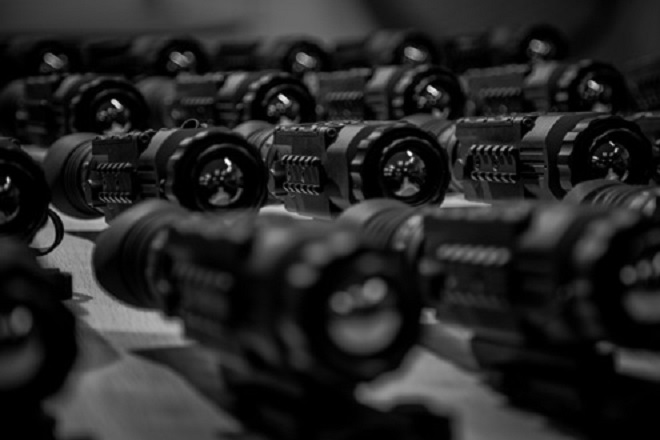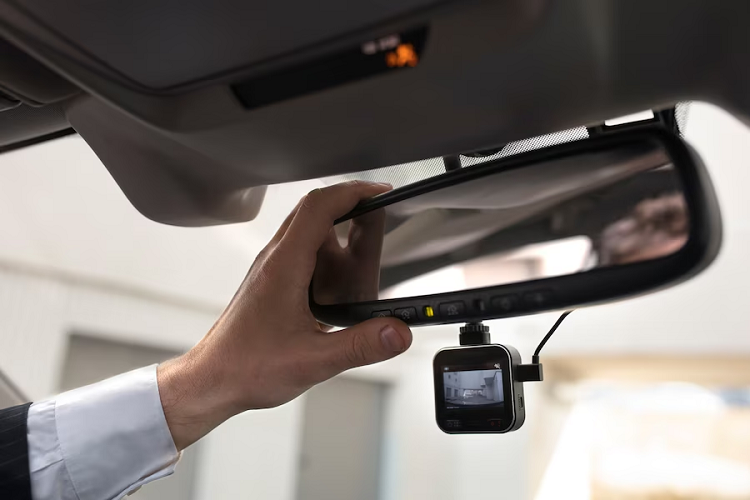The topic of this article is simple and banal, but it still does not lose its relevance. Any most straightforward or most advanced device or tool must be appropriately kept and serviced as it is used. This also applies to thermal imaging technology. Of course, the question of how to take care of your night vision equipment is always relevant.
The following recommendations will help extend the life of your night vision equipment and possibly save you money and nerves. When purchasing a night vision device for hunting, it is essential to familiarize yourself with all the main characteristics in advance and choose the most suitable option. This is where we will try to help you. First, it is worth understanding what and how a night vision device works.
Night vision devices are special photoelectronic devices that convert images that are indistinguishable in the dark into visible ones, amplifying light and giving them brightness and contrast.
The first devices that allow you to see in the infrared range were invented in the 30s of the 20th century. Since then, developers worldwide have not stopped improving them, expanding their capabilities more and more every year. Any night vision device consists of a lens, a radiation receiver, an amplifier, and a display device.
How to choose a night vision device?
When choosing night vision devices for hunting, first of all, you should decide what exactly you will use: binoculars, goggles, a monocular, or a scope, and only after that make a choice considering the technical characteristics of such optics.
The most versatile and common are binoculars. They are good because they allow you to observe with two eyes, significantly reducing the load on vision. The same characterizes glasses, but unlike binoculars, their magnification is always 1x, which provides the maximum viewing angle (up to 40° in some models).
If you want a more compact version, you should look for a monocular with similar functionality. The disadvantage, in this case, is the possibility of observation with only one eye.
On the positive side, you can highlight the potential of mounting on a helmet, and with a special adapter, you can even attach it to an optical sight. Although, in this case, it is better to buy a company with a night vision function immediately.
As in any other optics, they are essential:
- Magnification (this indicator affects the possibility of enlarging the image, but you should not expect parameters similar to stationary binoculars)
- Lens diameter (there is a direct pattern here – the larger the lens, the brighter the picture will be)
- Field of view (even using night vision devices, it is tough to navigate the terrain at night, so choosing models with a wide viewing angle is better. Remember that the higher the magnification, the narrower the field of view.)
- The ability to focus (here, you should pay attention to the possibility of adjusting the diopter difference)
- Image resolution (this indicator entirely depends on the generation you have chosen for night vision, and the higher it is, the smaller objects you can see)
You should pay attention to these characteristics of optics when choosing.
4 Ways to Care for Your Night Vision Equipment
Let’s start when you buy yourself a new gadget – any night vision device. It does not matter if it is night vision goggles, a thermal imager, binoculars, or a night vision monocular.
The main recommendation is to read the instructions for the device. No matter how simple it may sound, many users need to pay more attention to this advice and look into the treasured little book only when it is necessary to contact the repair shop.
The manufacturer indicates the conditions under which it is required to use night vision devices and the conditions under which they can fail. It is necessary to avoid independent technical intervention in the thermal imager.
Even if it is a matter of five minutes or a couple of turns with a screwdriver, it can get you in trouble. At least because any guarantee repair will refuse you if it sees traces of your intervention in night vision equipment because it could cause the malfunction.
There are essential steps to take care of night vision equipment.
Do not drop the night vision with the lens cap attached
This is the basic rule! The user should develop the habit of leaving the equipment turned off with the lens cap attached. Running a night vision device during the day without a cover will damage the sensitive optics and require service and, in some cases, even the purchase of a new product.
Replace batteries on time
As with most battery-powered devices, if the batteries are low, you risk flooding the device with a harmful substance. It is essential to check the condition of the batteries and complete the charge cycles (this will prolong their life). Turn off equipment when not in use. It is unacceptable to leave the night vision device switched on during the day, even with the lens cap attached. A sensor that displays the same image for a long time may burn out.
Night vision equipment needs to be cleaned
Each owner of night vision devices must have a liquid and a brush for cleaning the device’s optics without fail. Although the case can be handled less delicately, the optics sometimes require tender care. Some dirt, such as dust, may be completely invisible when visually inspected and visible when photographed by the device. The aim of cleaning the optics is to ensure the maximum possible transmission through the optical system and to protect the image without visible contamination or distortion adequately. It must be remembered that excessive pedantry in cleaning the coating is not recommended.
Bright light for night vision devices is harmful
Night vision devices are adapted for observation in conditions of limited or complete absence of lighting. Therefore, their design is not universal, and a “rasp” is created when faced with bright daylight. As the name suggests, this is a night-time device, so there is no need to use it during the day. Lens and optics can be permanently damaged, which in most cases causes accelerated deterioration in image quality, shortening the equipment’s life and requiring frequent maintenance.
How to take care of the thermal imager
First, take measures to save the thermal imager. What does it mean? After the hunt, it is better to remove the thermal imager from the weapon and put it in a case. The device is designed for some shock loads, but if it falls along with the gun, there is a high probability of damaging the thermal imager.
Cases of failure of controls and lenses are not uncommon. This is especially true for thermal imagers with large lenses. Children and pets contribute to the statistics of device damage if the device is left unattended on the table.
Therefore, children, pets, and night vision equipment should be kept as far apart as possible. Power supply. Try to use only standard batteries. If the power comes from “store” batteries, use batteries from trusted manufacturers. Keep track of the expiration date and release date of the batteries.
Be sure to remove the batteries when not in use. Even if you plan to go somewhere again tomorrow, take it out anyway. As it happens, the trip did not occur, and the batteries remained in the device for more than one month or even a year. Keep the machine clean.
Do not use “aggressive” cleaners that can chemically react with the rubber and metal parts of the thermal imager. As a rule, wet wipes and cotton swabs are enough to remove most of the dirt. To wipe the lenses, use only the wipes supplied or special wipes for optics.
Apart from apparent mechanical damage, the most common causes of failure of thermal imagers are “glare” and moisture ingress into the device. Let’s talk more about “Glare.” Do not point the thermal imager at sources of intense heat radiation.
There are better options than looking at a red-hot potbelly stove or a gas burner. It is not uncommon for hunters to turn on the device directed to a hot object without suspecting it, putting it out of action.
Ensure that the covers of the battery compartments and external power connectors are tightly closed. Often, having disconnected the external battery, hunters forget to close the connector with a cap, and when exposed to rain, the device draws water.
Of course, it is better to replace batteries, not underwater jets. If these simple recommendations are observed, most modern thermal imagers can withstand rain and short-term immersion under water.
How to care for binoculars?
The first and most important rule: Do not look through binoculars at the Sun! This can lead to permanent damage to your eyesight. Buying expensive binoculars is only possible if you know how to keep them in good condition. Below are some tips for caring for your binoculars. So for those who are just going to buy binoculars:
If you plan to buy binoculars, get one designed for the intended application area. For example, if you need to use it on the water, ensure it is water resistant and not just “water repellent.” If there is a high chance of dropping the binoculars while using them, ensure they can withstand such tests.
Know your load limit: Find out how rough the binoculars can withstand. Contact the manufacturer or retailer, describe to them the possible troubles associated with the intended use of the binoculars, and find out which can survive and which are not. If situations that lead to breakage are known, try not to use binoculars in such cases.
Always use a strap: Always wear a binocular belt around your neck. Most binocular falls happen when the binoculars are grabbed quickly with one hand, and the neck strap is not on. This occurs when there is simply no time to put the belt on the neck because there will be nothing to look at the next moment.
Choose a strap with good locks and check them periodically: always check that the belt is securely fastened to the binoculars. Check the strap fasteners by tightening and loosening them a few times to ensure they are tight enough.
Carry your binoculars in a case: When not in use, always keep your binoculars in a lawsuit or case with padded inserts. With binoculars left without a chance, some trouble can always happen. Spend a minute packing your binoculars into their subject.
Do not leave the binoculars in the sun or the car’s cab for long. The heat can hurt him. Read the manufacturer’s recommendations for cleaning binocular lenses. Try to blow any dust or dirt off the lenses of your binoculars first before handling them with a tissue or brush.
Next, breathe on the lenses and remove any visible stains with a Cleaning Pen or pad. Use only high-quality optical cleaners that do not damage the anti-reflective coating and do not leave marks on the lenses.
How to properly rinse off salt water: Do not attempt to clean your lenses with a tissue if salt water has been on the glass. Otherwise, you may leave scratches. First, rinse the lenses under a fresh water stream (avoid getting them inside if the binoculars are not fully waterproof).
Conclusion
In the arsenal of every hunter, there is always one or another optics. It can be simple binoculars or a monocular. They are designed to facilitate the observation of the surrounding nature and the process of tracking the game.
In addition, if binoculars and monoculars can cope with these tasks during the day, and some models even at dusk, then at night, you can’t do without a night vision device. Therefore, the care of such night vision equipment should be appropriate. We hope that the tricky tips you read in this article will help you when using your night vision technique.




